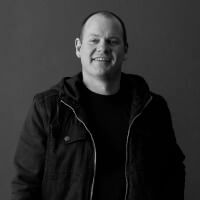Invest in property to retire on $200,000 a year
Having a strategic portfolio plan could allow you to retire comfortably and in control.

Blogger: Cam McLellan, CEO, OpenCorp
To continue reading the rest of this article, please log in.
Create free account to get unlimited news articles and more!
So it’s a new year and I bet you are already thinking you need a holiday, or trying to work out how soon you can retire. But just because you’re retiring, doesn’t mean you’re willing to give up all the things you enjoy, right? So what would you have to do to make sure you and your family can continue to live comfortably? A family could easily live off $200,000 a year, so I will use that as my target number for this article.
It is very achievable to retire your household on $200,000 a year, but doing so depends on two things. The first is the amount of capital or unused equity that you have available for deposits. The second and perhaps more important factor is the need to invest across multiple capital cities.
The reason why investing across multiple capital cities is so important is that you need to take advantage of at least two or three growth cycles during a 10-year period. This is not possible if you are investing in one capital city alone.
Purchasing five well-chosen properties over 10 years is achievable with the below assumptions:
- $90,000 annual average household income with a 5 per cent annual wage rise
- First property bought at $400,000
- 8 per cent annual property value increase
- Rental yield of 4.5 per cent of the property’s value
- 7 per cent interest rate
You will hopefully be able to purchase property in years one, three, five, seven and 10. This doesn’t need to be the exact sequence, but is an ideal one, as you could, for example, achieve some growth and buy three properties in a single year and then none for a few more years. The total asset value at year 10 will be approximately $5,000,000 with a net wealth of approximately $2,500,000.
By acquiring five well-chosen growth properties, an investor will be able to live on $200,000 per year by accessing equity. Holding costs for your properties will be approximately $32,000 per year, now this seems like a large amount of money to cover and would be if you were to use earned income to cover these expenses, but that’s not how smart investors live.
If you factor an annual growth rate of 8 per cent on your $5,000,000 property portfolio, the equity growth per annum is above $400,000. Keep in mind this growth won’t occur evenly each year, but once one of the cities increases and you have enough to live off and cover holding costs. Work then becomes an option and not a requirement.
Well-chosen growth properties is the only way to achieve this. You have a snowballs chance in hell of achieving this by buying ‘cash flow positive’ properties and they simply won’t get the growth required. I haven’t met anyone yet that’s achieved real wealth without growth properties. What you should be looking for are medium-density growth properties located within infill areas in our four major capital cities.
A well-chosen medium-density residential growth property located in our capital cities should cost you initially between $0 and $100 out of your pocket each week. They should then become positively geared within five years. Where earning capacity comes into play is the equity growth. This is how smart investors live. They access equity that is growing at a faster rate than their living expenses.
Smart investing is about following a process that continually delivers the best-performing growth properties in each city, time after time. Best performing comes down to two things: 1) excellent growth and 2) low cost to hold. The pitfall that most investors hit is changing their strategy. Buying good investment properties is actually pretty boring, as you should be using the same strategy each time, but it’s super effective for building wealth.
Just remember, all you need to do to ensure you can live the way you want to in retirement is follow a proven strategy that continually allows you to pick the best capital city market at any point in time. Then find the best area for growth and yield and finally the optimum size and quality property for that area.
Learn a system that works and simply keep repeating the process.

